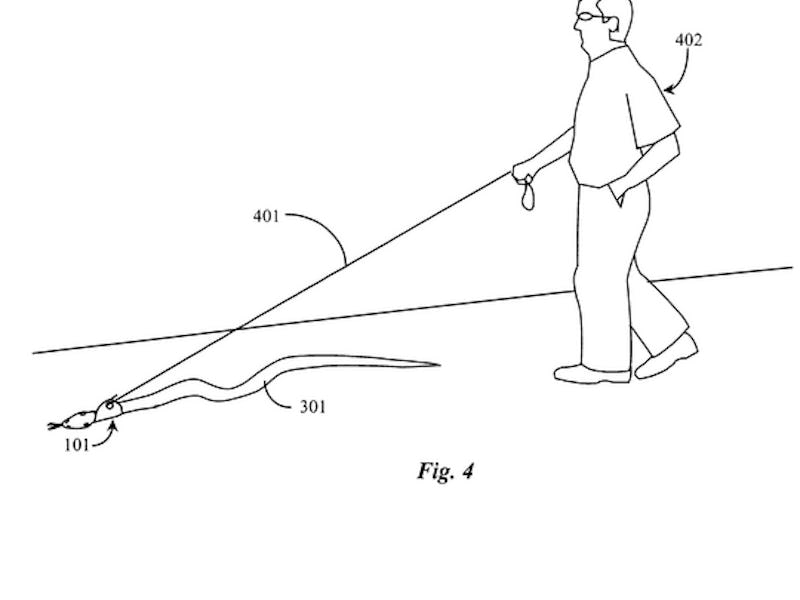This Patent For a Snake Leash Didn't Let Logic Get In the Way of Cool
Who wants to go for a slither?

It’s the snake-owner’s paradox: You know you’re cool, your snake knows you’re cool, but the rest of the town doesn't get to scope you chilling with your super-rare tiger anthrax reticulated python morph while wearing wraparound sunglasses (fig. 402).
California inventor and snake fan Donald Robert Martin Boys felt this pain. Fed up, he created the Collar Apparatus Enabling Secure Handling of a Snake by Tether (CAESHST), a way to take his legless pets for a jaunt.
The CAESHST, patented in 2002, fits around the neck of a snake (see: 101 in Fig. 4, above) allowing anyone to immediately become "That Snake Guy," scaring most small children but exciting the ones with nascent emotional issues. In a clever twist, Boys came up with an idea to negate the sinusoidal movement of snakes near the collar. A chainmail-like necklace of beads in parallel rows cancels the concertina — the snake’s accordion-like motion — while keeping the animal from slipping its leash.
There was just one problem: Pet snakes need a balmy 80 degree aquarium, but they don’t really need to be walked. Boys mentions testing his device with actual snakes, and he gives a brief ode to snake’s epidermal health thanks to UV rays. The background description also takes a turn for the melancholy: “Letting a snake go in a living room or outside can result in loss of the snake as it may slither into a crevice, hole, or other hideaway unnoticed,” he wrote, “making it difficult if not impossible to retrieve the snake.” Whichever beloved snake is rotting in your walls, Boys, we feel for you.
In an alternate universe, Boys' invention leveled the pet playing field as emphatically as Jon Voight spewed from the mouth of a giant anaconda. In ours, the patent has now lapsed.